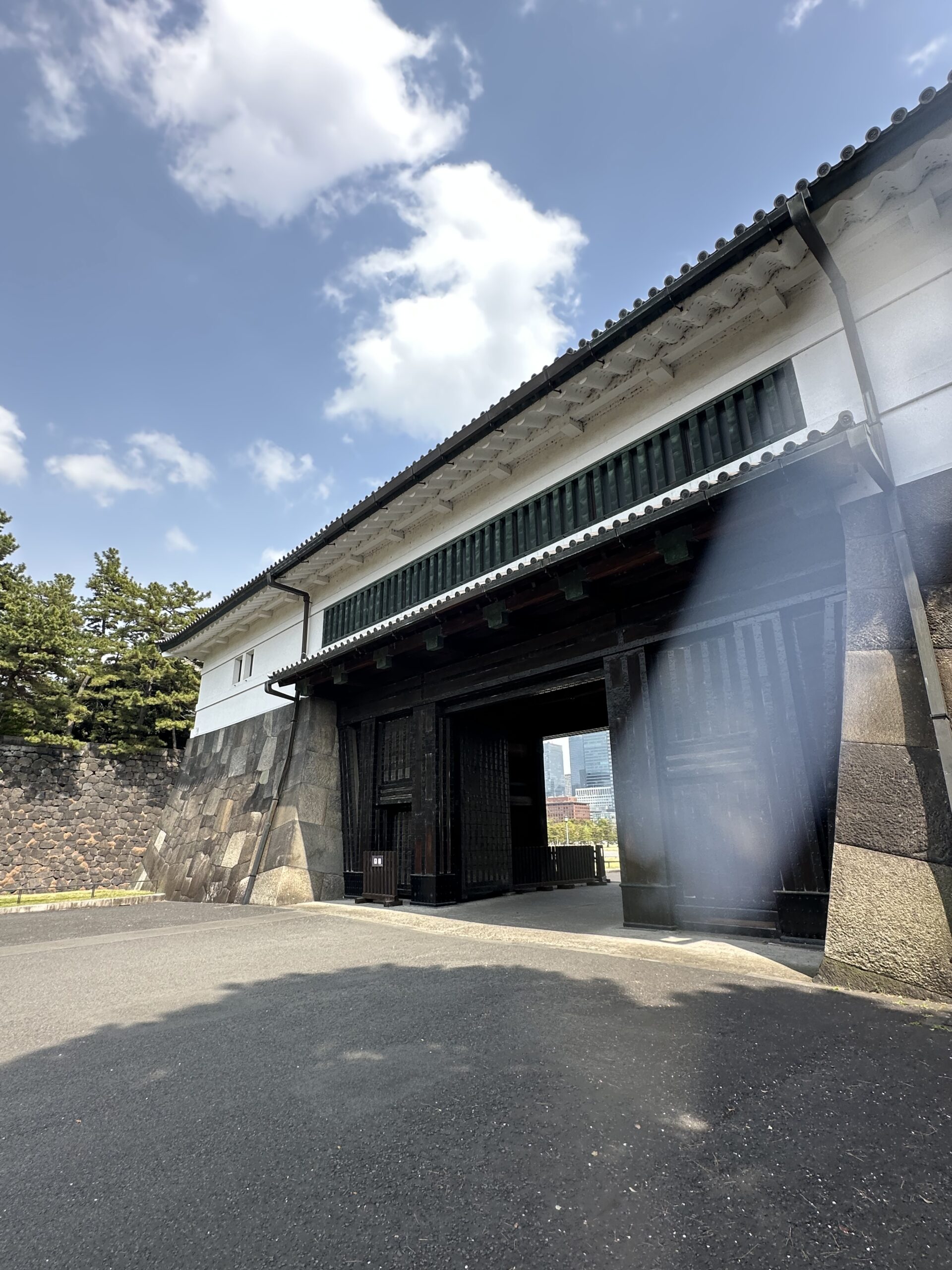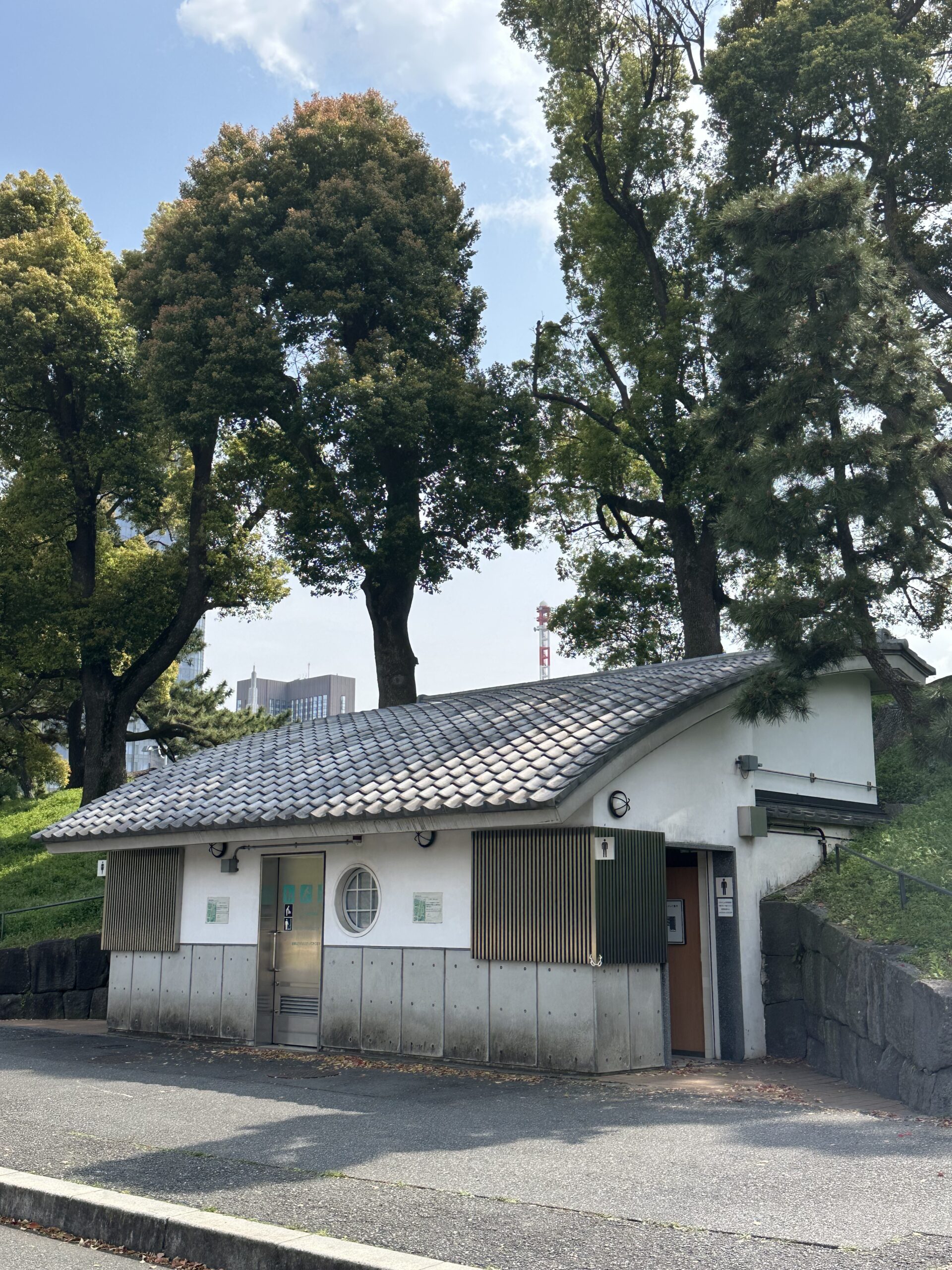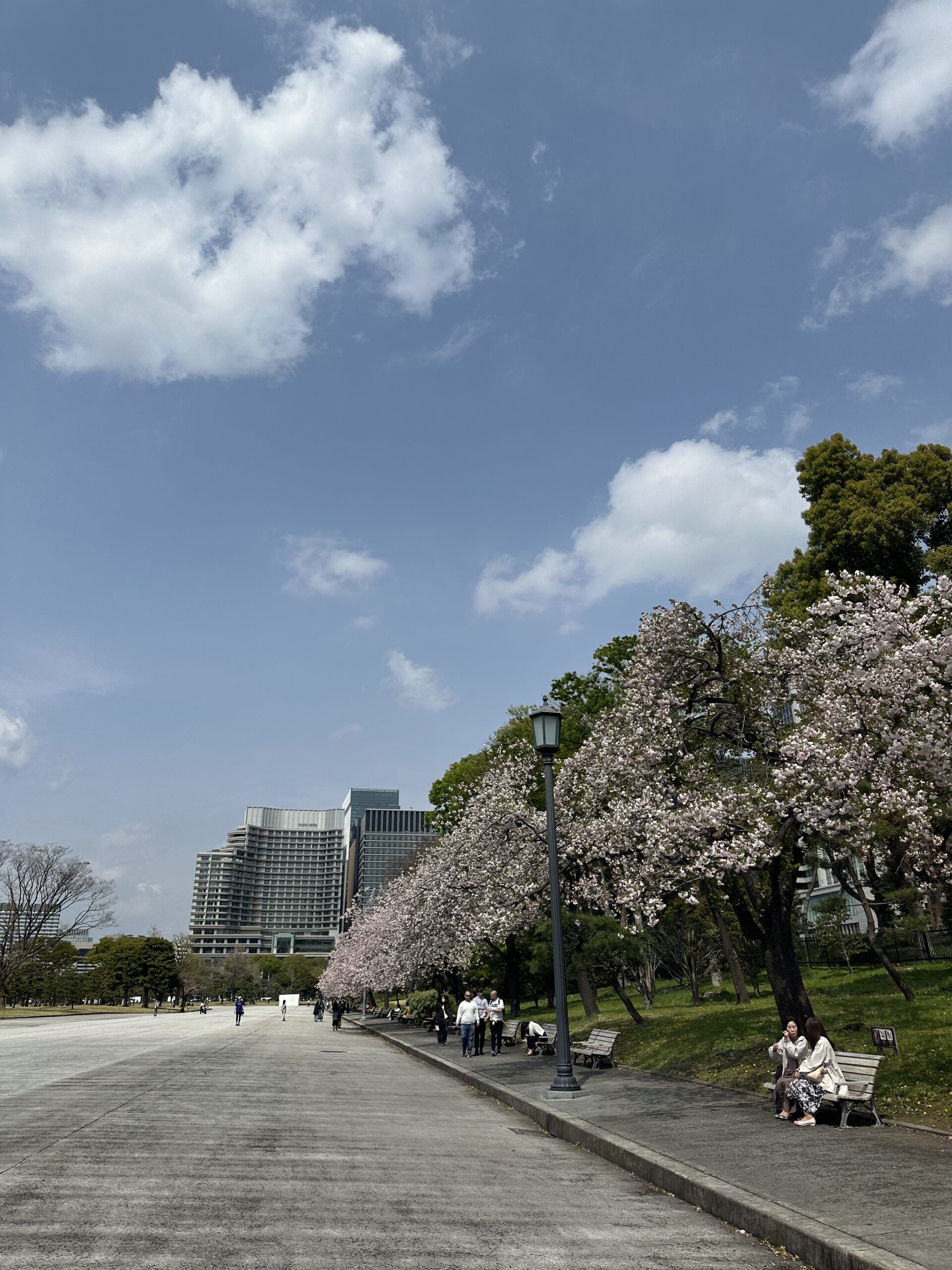Hello! my name is Morita !
I am the commander of an information base that provides information about tourism in Japan.
In this blog, Morita, who has lived in Japan for 20 years, provides useful information for travelers.
This time, I will introduce the Japanese Imperial Palace.(in japanese kokyo(皇居))
☞Location
The Jpanese Imperial Palace is located in Chiyoda Ward(千代田区), in the centre of Japan.
【Route from major spots】
🚆Tokyo station🚃
🚶♀️ Walking Route (Recommended!)
Time Required: About 10–15 minutes
Distance: Around 1–1.5 km (depending on which gate of the Imperial Palace you're heading to)
Example Walking Route:
Exit Tokyo Station from the Marunouchi Central Exit
Walk straight along Marunouchi Naka-dori Street (or take Gyoko-dori Avenue — both are scenic)
In about 10–15 minutes, you'll reach the Imperial Palace area, near Sakuradamon Gate, Otemon Gate, or Nijubashi Bridge
▶️ Walking is highly recommended, especially if you're visiting Otemon or Nijubashi, as the area is beautiful and full of historical landmarks.
🚆 By Train (for reference, walking is usually faster)
Time Required: Around 10 minutes (2 minutes on the train + walking)
Example Train Route:
Take the Tokyo Metro Marunouchi Line from Tokyo Station to Otemachi Station
Travel time: About 2 minutes
Just one stop
From Otemachi Station, walk to the Imperial Palace (Otemon or Nijubashi area)
Walk time: About 5–7 minutes
🚨 Note: Since Tokyo Station and Otemachi Station are connected by underground passageways, many people find that walking directly is faster than taking the train.
✅ Summary:
Walking: Quick, pleasant, and scenic — the best option in most cases!
Train: Convenient on rainy days or if carrying luggage, but usually not faster
⛩Asakusa
🚶♀️ Walking Route
Time Required: About 40–45 minutes
Distance: Around 3.5–4 km (a bit of a distance, but good for a walk)
Example Walking Route:
From Asakusa Station, exit toward Kaminarimon Gate and walk through Nakamise Shopping Street
Pass Senso-ji Temple and cross the Azuma Bridge
After crossing the bridge, continue walking straight along the street by the Sumida River
When you reach Chuo-dori Street (in front of the East Japan Railway Hotel), turn right and head towards Tokyo Station
Walk through the Marunouchi area, and you’ll arrive at the Imperial Palace
🚆 By Train
Time Required: About 20 minutes
Distance: About 4 km (Train ride is short, but there is one transfer)
Example Train Route:
Take the Ginza Line from Asakusa Station to Ginza Station
Travel time: About 10 minutes (4 stations)
Transfer at Ginza Station to the Marunouchi Line and go to Otemachi Station
Travel time: About 2 minutes (2 stations)
Walk from Otemachi Station to the Imperial Palace (about 5 minutes)
☞Gate
The Imperial Palace has a total of 12 main gates around its outer perimeter. These gates once served as defensive structures and have historical significance.
Here are the most notable gates:
1. Otemon Gate
- The most famous gate, located near Tokyo Station. It’s one of the main entrances and a popular spot for tourists.
2. Nijubashi Bridge
- This iconic bridge and its surrounding gates are some of the most recognized landmarks in Tokyo, often seen in photos of the Imperial Palace.
3. Sakuradamon Gate
- Known for its historical importance, especially during the Sakuradamon Incident in the Meiji era.
4. Hanzomon Gate
- Famous in its own right, it’s located near Hanzomon Station, which was named after this gate.
5. Kitakikubashi Gate
- Located on the northern side of the palace, this gate is quieter and less visited but still an important part of the Imperial Palace grounds.
6. Wadakura Gate
- On the east side of the palace, this gate is not typically open to the public but still has historical significance.
7. Matsunorouka Gate
- Less commonly visited by tourists, this gate leads to a historical corridor once lined with pine trees.
8. Minamizume Gate
- Situated on the southern side of the palace, this gate provides access to the inner palace grounds.
9. Tamon Gate
- A gate with its own unique history, important but not often on the tourist path.
10. Ohori-bata Gate
- Located near the moat that surrounds the Imperial Palace, this gate is a quieter part of the grounds.
11. Horibata Gate
- Close to the edge of the Imperial Palace’s moat, it’s another interesting historical gate to explore.
12. Tsujiji Gate
- A historically significant gate that was renovated during the Meiji period and played a key role in the palace’s defenses.
The most commonly visited gates by tourists are Otemon, Nijubashi, and Sakuradamon. However, there are many other gates with rich historical value that are less frequently explored.
I highly recommend Sakuradamon Gate. The reason is that, as you can see in the photo below, it preserves a traditional Japanese castle gate style, which was commonly used in many of Japan’s castles. The gate has been beautifully maintained, and it’s a perfect spot for taking a photo. Definitely try to snap a picture here!


Tips: Nationally Designated Important Cultural Property
The gate is commonly referred to as Sakuradamon Gate. It is one of the few castle gates where the original masugata (moat and cornered structure) is still fully intact. It was also the starting point of the Odawara Kaido road and was known as the Odawara Gate.
The door’s metal fittings bear the inscription “Kanbun 3” (1663). In Ansei 7 (1859) / Man’en 1 (1860), the gate became infamous as the site of the Sakuradamon Incident, where the shogunate official Ii Naosuke was assassinated by Mito ronin near the moat outside the gate.
☞Topic :🌸cherry blossom🌸(sakura桜)
In spring, many cherry blossoms bloom at the Imperial Palace, creating a beautiful atmosphere with the castle and the sakura. Here are some great spots to view the cherry blossoms around the Imperial Palace, along with directions from Sakuradamon Gate:
1. East Gardens of the Imperial Palace (皇居東御苑)
- Distance from Sakuradamon Gate: About 5–7 minutes by foot.
- Route: Exit Sakuradamon Gate and walk along the main path. You will reach the entrance to the East Gardens at Sakurada Gate. The gardens are open to the public and are a beautiful spot for cherry blossom viewing.
2. Chidorigafuchi (千鳥ヶ淵)
- Distance from Sakuradamon Gate: About 10–15 minutes on foot.
- Route: Head west from Sakuradamon Gate, cross the Nijubashi Bridge, and continue walking along the moat. Chidorigafuchi is located to the northwest, and you’ll find a beautiful view of the sakura along the water. You can even rent a boat to row along the moat!
3. Kitanomaru Park (北の丸公園)
- Distance from Sakuradamon Gate: About 15–20 minutes on foot.
- Route: Walk north from Sakuradamon Gate, cross Nijubashi Bridge, and continue toward the Kitanomaru Park area. The park is located just north of the Imperial Palace, and it offers great views of cherry blossoms with a view of the Nijubashi Bridge.
☞break
1. Gaiemmae’s Lawn Spaces (Gaiemmae Icho Namiki – The Ginkgo Avenue)
- How to Get There: About a 5-minute walk from Gaiemmae Station, near Gaiemmae Icho Namiki
- Highlights: Famous for its stunning autumn foliage, Gaiemmae Icho Namiki is a beautiful spot to enjoy throughout the seasons. There are spacious lawn areas where you can take a break, relax, or even have a picnic. Benches are available along the way, making it a great place to pause and unwind.
- Why Visit: This spot offers a peaceful retreat with the sounds of birds and nature. Spring and autumn are especially perfect for enjoying some downtime here.
2. Benches Near Sakuradamon (Imperial Palace Outer Grounds)
- How to Get There: About a 5-minute walk from Sakuradamon Gate
- Highlights: The Imperial Palace Outer Grounds offer several peaceful walking paths, and there are numerous benches along the way. The area around Nijubashi Bridge and near the entrance to Kōkyo Higashi Gyoen (East Gardens) is especially nice for a quick rest.
- Why Visit: You can relax while enjoying views of the historic Imperial Palace. The benches provide a great spot to sit under the trees and take in the atmosphere, especially during the cherry blossom season or autumn when the colors are stunning.(There are also restrooms available.)

3. Chidorigafuchi Park Benches
- How to Get There: About a 10–15 minute walk from Sakuradamon Gate
- Highlights: Famous for its cherry blossoms in spring, Chidorigafuchi Park offers a tranquil escape year-round, with benches scattered along the walking path. The Chidorigafuchi moat and surrounding greenery make for a peaceful place to rest.
- Why Visit: While it’s a popular spot during the sakura season, you can also enjoy the changing scenery throughout the year. The benches by the moat are perfect for a calm break.
4. Benches in the Imperial Palace Outer Gardens
Why Visit: This peaceful setting, with views of the Imperial Palace, offers a perfect spot for a break. It’s an ideal escape from the hustle and bustle of the city, providing a serene environment to recharge.☞break
How to Get There: About a 5-minute walk from Sakuradamon Gate
Highlights: The Imperial Palace Outer Gardens feature large, open spaces and several benches where visitors can relax. Especially near Nijubashi Bridge and Kitakikubashi Gate, there are places to sit and enjoy the serene surroundings.
- 1. Otemon Gate
- 2. Nijubashi Bridge
- 3. Sakuradamon Gate
- 4. Hanzomon Gate
- 5. Kitakikubashi Gate
- 6. Wadakura Gate
- 7. Matsunorouka Gate
- 8. Minamizume Gate
- 9. Tamon Gate
- 10. Ohori-bata Gate
- 11. Horibata Gate
- 12. Tsujiji Gate
- 1. East Gardens of the Imperial Palace (皇居東御苑)
- 2. Chidorigafuchi (千鳥ヶ淵)
- 3. Kitanomaru Park (北の丸公園)
- 2. Benches Near Sakuradamon (Imperial Palace Outer Grounds)
- 3. Chidorigafuchi Park Benches
- 4. Benches in the Imperial Palace Outer Gardens
- ☞summary
☞summary
The Imperial Palace is one of the most iconic landmarks in Tokyo, offering a perfect blend of history, culture, and natural beauty. During spring, the palace grounds come alive with cherry blossoms, creating a stunning contrast between the ancient walls of the palace and the delicate pink flowers. It’s a sight that captures the essence of Japan’s appreciation for nature and its changing seasons.
As you stroll through the East Gardens or near the Chidorigafuchi moat, you’ll be surrounded by peaceful greenery and historical structures, making it a perfect escape from the bustling city. The Imperial Palace is not just a symbol of Japan’s rich history, but also a sanctuary of tranquility amidst the modern hustle and bustle of Tokyo.
In spring, the cherry blossoms (sakura) bloom around the palace, attracting visitors from all over the world who come to witness this breathtaking natural display. The combination of the palace’s majestic architecture and the fleeting beauty of the sakura offers a truly unforgettable experience. It’s a must-see, especially during the cherry blossom season when the atmosphere is magical and full of life.


コメント